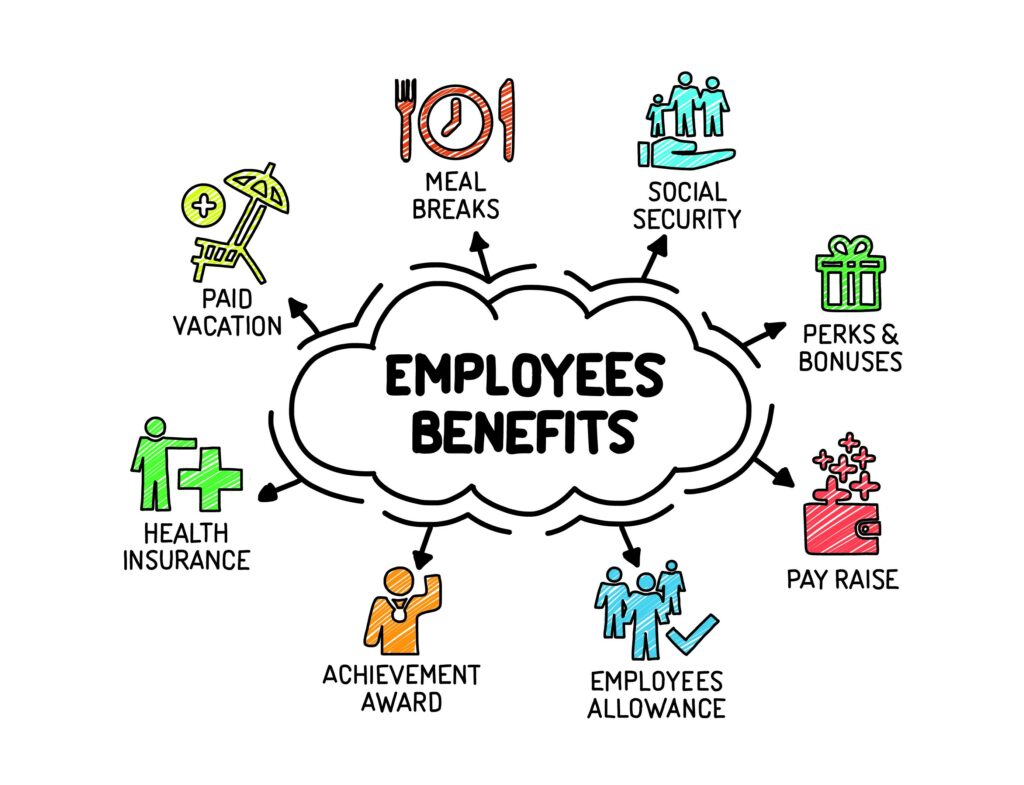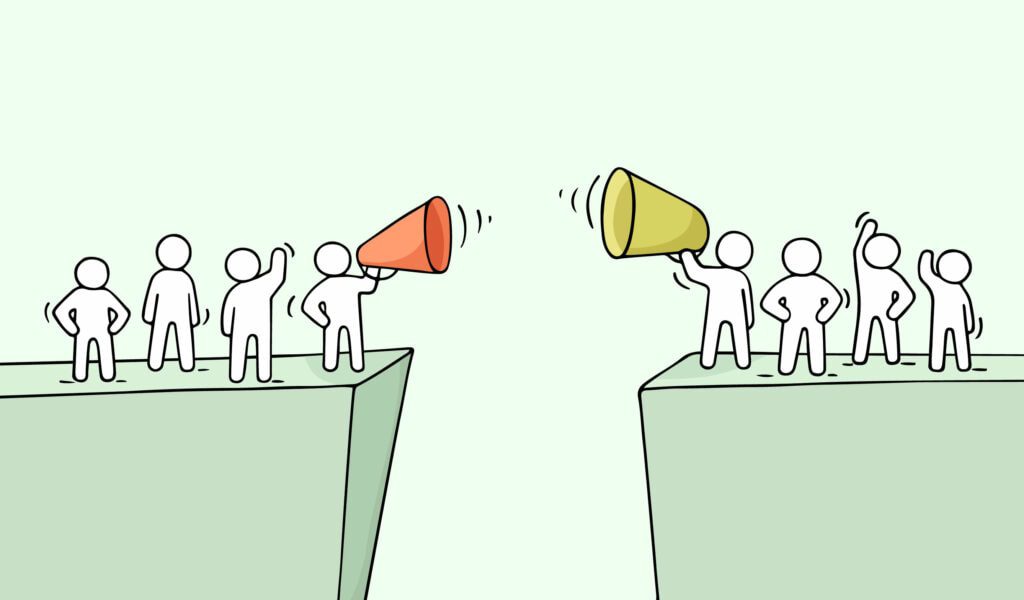Over the past 18 months, countless workers globally left jobs in various fields. This mass departure is attributed to factors like low pay, limited growth, work-life imbalance, management dissatisfaction, and more. The solution lies in adopting employee retention strategies, the initial move to cut turnover and boost loyalty.
Let’s explore what is employee retention and why it matters for businesses.
What Is Employee Retention Strategy?
An employee retention strategy refers to a planned and proactive approach that organizations adopt to retain their workforce and reduce employee turnover.
It involves implementing various initiatives and practices aimed at creating a positive work environment, enhancing job satisfaction, and fostering a strong sense of commitment and loyalty among employees.
The ultimate goal of an employee retention strategy is to reduce attrition rates and ensure that valuable employees stay with the organization for the long term.
Why Employee Retention is Important?
Acquiring top-notch personnel to aid in achieving your organisational objectives holds significance, yet the cost of losing an employee extends beyond finances. Hence, investing in established methods, policies, and tactics to keep your top achievers and curtail turnover becomes crucial.
Let’s delve deeper into the significance of employee retention.
1. Cost Savings
High turnover rates can be costly for organizations due to the expenses associated with recruiting, hiring, and training new employees. Retaining experienced staff reduces these costs.
2. Productivity and Performance
Long-term employees tend to be more knowledgeable and skilled in their roles, leading to increased productivity and better performance. High turnover can disrupt workflow and lead to decreased productivity as new employees learn the ropes.
3. Organizational Knowledge
Employees who have been with the company for a while accumulate valuable institutional knowledge and understanding of processes. Retaining them helps maintain this knowledge within the organization.
4. Morale and Team Dynamics
Frequent turnover can create a sense of instability and negatively impact the morale of remaining employees. High retention rates contribute to a positive work environment and stronger team dynamics.
Read more: 11 Ways to Boost Employee Morale
5. Customer Relationships
Employees who have built strong relationships with clients or customers contribute to customer loyalty and satisfaction. Consistent turnover might lead to disruptions in these relationships.
6. Training and Onboarding
New employees require time and resources for training and onboarding. Higher retention reduces the need for constant training and allows organizations to focus on other strategic initiatives.
7. Company Reputation
High turnover can reflect poorly on the organization’s reputation, making it less attractive to potential employees and clients. Low turnover, on the other hand, signals a positive work culture and stability.
8. Employee Engagement
Retained employees are more likely to be engaged and committed to their roles and the organization’s mission. Engaged employees tend to be more innovative, creative, and contribute positively to company growth.
Read more: 10 Restaurants Employee Engagement Best Practices
9. Continuity and Stability
Consistent staffing levels foster a sense of continuity and stability within the organization, allowing for smoother operations and long-term planning.
10. Cost of Turnover
The cost of replacing an employee can be substantial when considering recruitment, training, and lost productivity during the transition period. Retention efforts can significantly reduce these costs.
11. Employee Development
Retaining employees allows organizations to invest in their professional development and career growth, leading to improved skills and performance over time.
12. Succession Planning
Organizations can identify and groom high-potential employees for leadership positions if retention is high. This helps ensure a smooth transition when key positions need to be filled.
Overall, employee retention contributes to a stable, productive, and positive work environment that benefits both the organization and its employees. It helps build a foundation for long-term success, growth, and sustainability.
Read more: 8 Causes of High Rate of Employee Turnover
Best Employee Retention Strategies in 2023
Having an effective employee retention strategy is the first step to reducing turnover rates and improving employee loyalty. It’s critical to have one, including the situation where your employees are on an hourly work or shift work arrangement or have remote or flexible work arrangements.
1. Offer a Competitive Pay
Offering a competitive salary is the most important thing to retain employees. One thing the company should do regarding compensation is monitoring how much other companies pay their employees.
You will likely lose your best employees if your company’s salary is lower than your competitor’s. Also, your company should consider what kind of raises and bonuses other companies offer.
Other than getting paid for their time and work, employees are making sure that their salary is enough for their cost of living, including rent, food, taxes, and other things they should pay.
Their compensations must also be adjusted with their experience growth and rising inflations. In sum, an employee’s salary more or less must reflect your employee’s living cost.
After that, your employees should be paid according to their responsibilities, so higher responsibilities mean a higher salary.
2. Allow Employees To Have A Say
A key component of retention strategy is giving employees the platform to express concerns, ideas, and perspectives without the fear of consequences or backlash from the company’s leaders.
Employees may have concerns and ideas about the company, and managers might not have realised that these issues exist.
In addition, outlet managers and area managers should follow up with the crew regularly on what the company can do to meet their career objectives in order to retain employees. This can be a 15-minute kopi chat with each employee once every 1-3 months!
As a HR Director, you might run surveys or develop ways for crew and managers to share their feedback anonymously. During meetings, give your crew the opportunity to present ideas and speak their minds about ways to improve their workplace.
This also means not dismissing their concerns or feedback immediately, acknowledging their concerns, and taking the time to hear them out!
In sum, your employees love it when they can voice their opinions. Whether you take them to chat or listen to their views while meetings, your employees will be less likely to quit if you listen to them. Also, don’t forget to give some constructive feedback!

3. Recognize And Reward Employees For Their Performance
People naturally want to feel appreciated and valued at their workplace. When outlet managers and crew receive recognition, it boosts engagement and motivates them to work harder. It lets them know that they’re doing their job correctly and their loyalty to the business grows.
While a salary increase, promotion or monetary reward is the most obvious way of rewarding employees, there are also other ways for managers to recognize employees. After all, recognition and rewards shouldn’t only come once every one or two years!
Managers can offer recognition to their employees by expressing public thank you messages and featuring top employees based on performance on the company’s newsletter or blog.
For example, you can set an employee of the month based on performance. To motivate employees to work for the rewards, you can offer special compensation such as extra tips or a raise in hourly pay or salary.
For example, Zappos has a unique bonus program where co-workers can nominate one another for $50 monthly bonuses. The bonuses can be for any reason, such as making another employee’s day or going above and beyond on any assignment. As a result of its amazing leadership, culture, and programs, Zappos has an 85% retention rate among its staff.

4. Have A Cohesive Culture
A positive company culture provides a competitive advantage in recruitment since people are attracted to a company that makes their staff feel comfortable. In addition, employee engagement and retention improve because they enjoy going to work every day and are treated well by others.
You might have heard of stories where people hesitated to move to another company even if they were promised higher pay, because they enjoy working in their current workplace so much and feel a strong sense of belonging.
A cohesive culture can be built within an organization by hiring managers and crew that resonate with the company values, having proper issue-resolution procedures, and fostering respect and open communication. Reinforce and instill these values and principles of the company’s culture in your employees.
Also, a cohesive culture can be built based on teamwork. If your employees have work-related problems, you should encourage them to contact their respective teams. By doing so, you can train your employees to work out the issues collaboratively.
For example, Clif Bar has an impressive 97% retention rate by sharing its mission and core values with its employees. In 2000, the ownership decided to give employees stock options, helping employees to feel a shared sense of ownership.
5. Improve Your Compensation Package And Employee Benefits To Hire The Best Talents
Employees regularly assess the employment opportunities available to them. It’s essential to have a competitive compensation package and employee benefits to attract new talent and retain them.
Tie the raises or bonuses to performance to give managers and crew a fair opportunity to achieve the financial incentives. Make sure to include desirable employee benefits as well.
It might not always be feasible to provide luxurious facilities to your employees, but most employees are happy with good health insurance, annual leave, a holiday bonus, flexible hours, and employee discounts.
Many restaurants offer a discount on menu items for employees and their family members (and who doesn’t like cheap and good food?! You’ll never complain about not being popular among your friends and family.)
For example, Japan Food Holdings’ employee benefits include a welcome benefit of $800, a $500 Keep-Fit incentive, an attendance allowance, birthday vouchers, staff meals, and discounts. Employees also get to enjoy a $300 staff referral fee if applicable.

6. Proper Onboarding Of New Employees
New employees are usually excited to start their new job and learn, and this is the time when they have lots of energy and enthusiasm! However, a lack of training and onboarding can lead to anxiety and uncertainty around their job, and their energy can quickly run out.
Great onboarding programs help employees to forge relationships with other employees and their managers, encourage open communication, and increase employee engagement.
It’s critical for management to organise a proper orientation program for new hires that explains the work processes and gets them acquainted with new colleagues and managers. This becomes much easier when the company has proper structures and processes in place.
For example, good employee schedules and accurate time tracking will make it a lot easier for a new crew member to ease into the day-to-day work.
In addition, an organization may offer mentorship programs where seasoned workers help out new employees. The mentor can check in regularly to see how they are coping.
By the end of the onboarding process, the new hires should know the organization well (including its vision, structure, goals, culture, product, or service), get to know people in their workplace, and have the right materials and knowledge to perform well at their job.
7. Provide Career Development Opportunities
Businesses should provide career development opportunities for their workforce, including upskilling and vertical and horizontal career growth. This encourages employees to look internally for career progression and professional development, instead of looking for these opportunities elsewhere.
If employees feel that they have a career objective to work towards, that can boost employee retention and job satisfaction. Providing professional development can also increase the productivity of your business since you have a more skilled workforce.
Put yourself in the shoes of a waiter or waitress working in a restaurant. Some people see it as a dead-end job with no opportunities for growth, and many leave when they can switch careers.
The only thing you can do is become a manager (of which there can only be one per outlet) or work somewhere else that pays more. However, career development opportunities aren’t only limited to the positions available.
Upskilling is the process of teaching workers new skills. At a restaurant, a busser may learn new customer service and communication skills to transition to being a waiter or waitress.
A waiter or waitress may learn to serve VIP customers and learn transferrable customer service skills. A worker with more talent and skills gives the manager greater flexibility in assigning jobs to their team.
Vertical career growth means employees receive a promotion and obtain the next job title. For example, in a retail setting, vertical career growth can be a crew member moving up to a crew leader, then to a supervisor, and eventually to an outlet manager.
Horizontal career growth means the employee obtains new knowledge and skills to create more value for the company. An employee could be transferred to other departments where they learn new skills and understand what it’s like to work in another department adjacent to their previous one.
For example, at a cafe-restaurant, a crew member may move from making drinks to working at the cash register. The small shift in responsibilities allows the employee to gain insight into other roles and makes the employee more valuable in the marketplace and the company. Employees appreciate it when an employer does their best to give them opportunities for growth!

8. Have A Good Leadership Style
You might have heard the quote, “People don’t quit their jobs, they quit their bosses.” Many of us might have complained about our bosses at some point, which goes to show how much influence good and bad bosses have on the employee experience!
Almost half of employees quit their job because of a bad manager, and 60% think their managers need training.
Moreover, managers should have compassionate and mindful leadership skills that unlock the potential of their employees. Leaders should trust their crew and managers to complete the tasks rather than micromanaging them. Provide constructive feedback.
Leaders must also have good listening and communication skills. Great leaders are willing to listen to the needs of their team, take feedback from the crew, and even accept responsibility when they’re wrong.
That’s how they gain respect and loyalty from employees who would be keen to stay on as long as their boss is working at the company.

9. Introduce Fun To Work
Most employees spend 40 hours per work at their job. If they don’t enjoy working there, they’re more likely to quit. An employee who isolates themselves, shows apathy or lack of motivation, or is less active are signs that they may resign sooner rather than later.
A healthy work environment usually consists of fun activities that bond the team together to build camaraderie. The management team can organize events, celebrate together during festivities and promote socialising in the workplace.
Outings such as parties and team-building activities can improve working relationships within the company and work life balance of each employee.
Turn boring activities into something more interesting. For example, meetings or lectures can include delicious snacks or lunch to make it more enjoyable. You can also allow employees to decorate the workplace during the holidays.
For instance, Hyatt introduced a cooking competition that resulted in a 10% reduction in kitchen staff turnover across 130 full-service properties.
The competition allowed chefs to create new dishes, and the winner received two free airline tickets, an extra week of vacation, and a free stay at any Hyatt (a dream for many of us who are currently starved for travel experiences during the pandemic). In addition, 6 of the 12 finalists received promotions!

10. Ensure The Company Has Positive Growth And Is In Good Financial Standing
Job security is a concern for many employees. Companies that have stagnated will result in fewer career advancement opportunities for employees.
Be transparent about the company’s current situation and future aspirations. Talk to employees about business goals in the upcoming months or years and let them know how their efforts are contributing to the organization. Share good news such as revenue growth, new expansion, new product lines, and more.
For example, if you’re a manager of a large retail chain, you can share how your store has outperformed competitors or stores in other locations so that employees feel motivated to work harder and keep up the good work.
11. Take Care Of Employees’ Well-Being
Apart from regular medical benefits, companies can offer additional health benefits, such as access to counsellors if managers or crew need mental health assistance and exercise classes to encourage regular fitness habits. Teams that work out together, stay together!
Healthy snacks or in-house workshops on topics like financial literacy can also be helpful for employees and lets them feel valued. Also, companies can consider giving them mobile stipends because nowadays, people use their phones for work-related stuff.
And last but not least, employees deserve a short break after working for 3 hours. Giving them a short break will reduce their stress and make them happier in the long run. Thus, it will make employees feel valued and less likely to move to another company.
Conclusion
Employee retention is a multi-faceted approach. Many factors come into play in providing an optimal work environment for employees. When a manager or crew decides to quit, it can be very costly to hire and train a new person.
Incorporating some of these innovative employee retention strategies can improve company morale and increase employee productivity, in turn encouraging employees satisfaction and company profits.
Work processes are one of the factors that affect employee retention. Employees feel frustrated at having to undertake manual and time-consuming processes that produce inaccurate results!
To increase efficiency and lower costs, check out StaffAny, a time scheduling and time attendance tracking app that streamlines the work between HR and Operations and allows employees to have better productivity.











